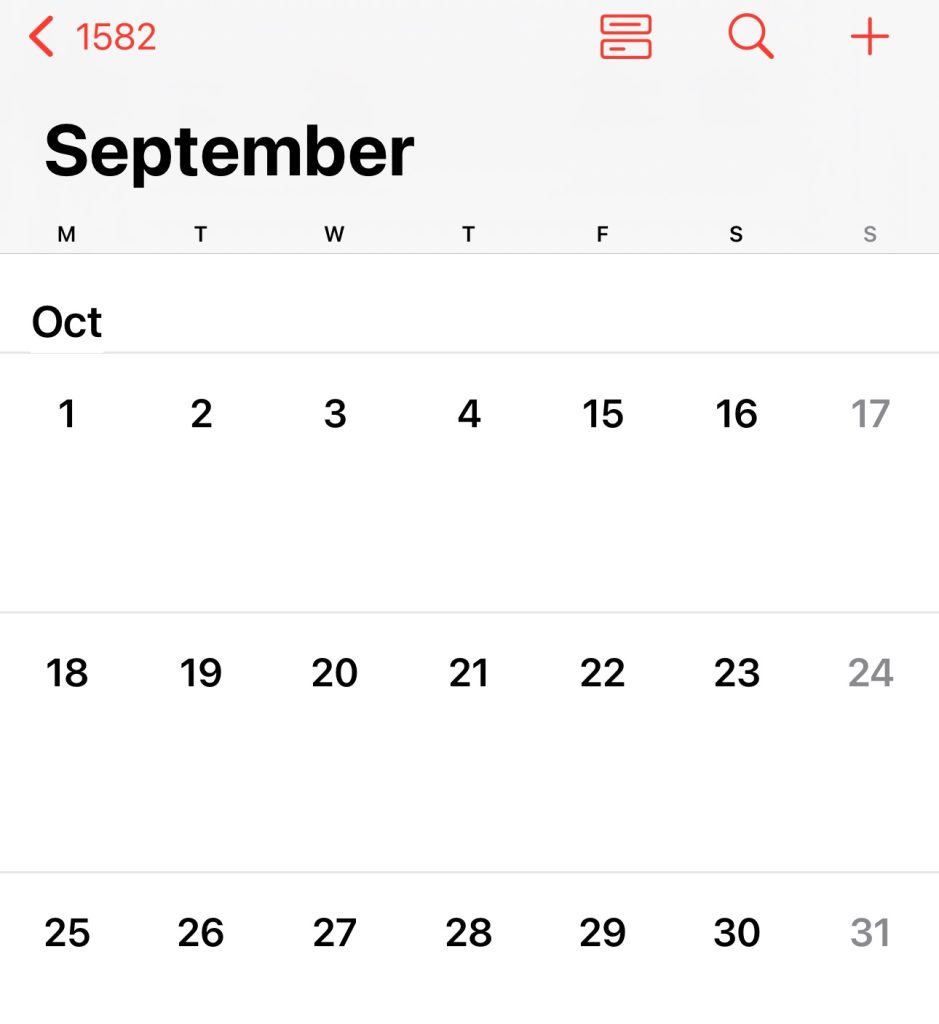Open your phone’s calendar and scroll back to October 1582.
You’ll notice something strange: October 5th through October 14th simply don’t exist.
The calendar jumps straight from October 4 to October 15, as if time itself glitched.

This isn’t a software bug.
This is your smartphone faithfully reproducing one of the most important—and bizarre—moments in calendar history: the birth of the Gregorian calendar.
Welcome to the story of the week that never happened.
The Problem: A Calendar That Fell Out of Sync with the Sun
For more than fifteen centuries, Europe used the Julian calendar, introduced by Julius Caesar in 45 BCE. Although revolutionary at the time, it had a tiny flaw:
It miscalculated the length of the solar year by 11 minutes and 14 seconds.
This error seems trivial—until you multiply it by 1,500 years.
By the 1500s:
The calendar was drifting 1 day every 128 years. The spring equinox, which should fall around March 21, was arriving on March 11. Religious holidays dependent on astronomical events—especially Easter—were slipping out of alignment.
The world was running late, cosmically speaking.
The Solution: Pope Gregory XIII Hits “Delete” on Ten Days
To fix the issue, Pope Gregory XIII established a commission of astronomers and mathematicians. Their work produced the Gregorian calendar, the world’s most widely used calendar today.
But to realign dates with the seasons, they had to perform one dramatic operation:
Remove ten days from the calendar.
And so, in countries that adopted the new system:
Thursday, October 4, 1582 was followed immediately by Friday, October 15, 1582
Ten entire dates disappeared—never observed, never lived, never written in any diary.
This was the moment the modern calendar was born.
Not Everyone Agreed—At Least Not Right Away
The reform was initially adopted by:
Italy Spain Portugal Poland Most Catholic regions of Europe
Protestant and Orthodox countries were… less enthusiastic.
Over the next centuries:
Britain and its colonies switched in 1752, skipping 11 days. Russia waited until 1918, skipping 13 days after the Bolshevik Revolution. Greece held out until 1923.
This is why historical dates before the 20th century often require careful context—different countries were using different calendars.
Why Your Phone Knows This
Modern digital calendars—including those on iPhones, Macs, and Google systems—use the proleptic Gregorian calendar. That means:
They apply the Gregorian calendar backward and forward through all years. But they also preserve the actual 1582 transition exactly as it happened.
So when you scroll back, the “missing days” appear exactly where history left them.
Your phone is not broken.
It’s being historically honest.
The Legacy of the Lost Days
The Gregorian reform fixed the drift by introducing the leap-year system we still use:
A leap year every 4 years Except years divisible by 100, unless they’re also divisible by 400
This fine-tuned system keeps the calendar aligned with Earth’s orbit to within seconds per year.
The lost ten days were the price of mathematical precision—and the reason today’s equinoxes, solstices, and holidays fall where they should.
A Week That Never Was
Next time you explore your phone’s calendar and stumble into the “time gap” of 1582, remember:
You’re looking at a real historical moment captured in your device—a digital memorial to ten vanished days that helped synchronize human timekeeping with the cosmos.
The world didn’t lose time.
It just corrected itself.





